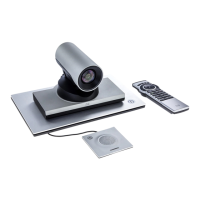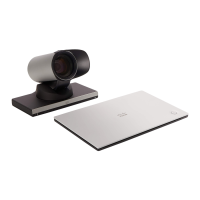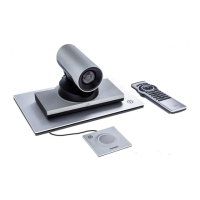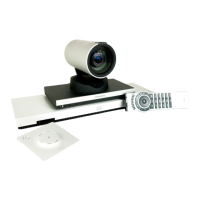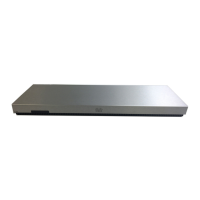D15107.0 5 Codec SX80 API Reference Guide TC7.3, OCTOBER 2015. Copyright © 2015 Cisco Systems, Inc. All rights reserved. 56
Cisco TelePresence SX80 API Reference Guide
xConfiguration NetworkServices MultiWay Address
The MultiWay address must be equal to the Conference Factory Alias, as configured on the Video
Communication Server. The MultiWay™ conferencing enables video endpoint users to introduce a
3rd party into an existing call.
MultiWay™ can be used in the following situations:
1) When you want to add someone else in to your existing call.
2) When you are called by a 3rd party while already in a call and you want to include that person in
the call.
Requirements: Video Communication Server (VCS) version X5 (or later) and Codian MCU version
3.1 (or later). Video systems invited to join the MultiWay™ conference must support the H.323
routeToMC facility message if in an H.323 call, or SIP REFER message if in a SIP call.
Requires user role: ADMIN
Value space: <S: 0, 255>
Format: String with a maximum of 255 characters (a valid dial URI).
Example:
xConfiguration NetworkServices MultiWay Address: "h323:multiway@company.com"
xConfiguration NetworkServices MultiWay Protocol
Determine the protocol to be used for MultiWay calls.
Requires user role: ADMIN
Value space: <Auto/H323/Sip>
Auto: The system will select the protocol for MultiWay calls.
H323: The H323 protocol will be used for MultiWay calls.
Sip: The SIP protocol will be used for MultiWay calls.
Example:
xConfiguration NetworkServices MultiWay Protocol: Auto
xConfiguration NetworkServices HTTPS Mode
HTTPS is a web protocol that encrypts and decrypts user page requests as well as the pages that
are returned by the web server.
Requires user role: ADMIN
Value space: <Off/On>
Off: The HTTPS protocol is disabled.
On: The HTTPS protocol is enabled.
Example:
xConfiguration NetworkServices HTTPS Mode: On
xConfiguration NetworkServices HTTPS VerifyServerCertificate
When the video system connects to an external HTTPS server (like a phone book server or an
external manager), this server will present a certificate to the video system to identify itself.
Requires user role: ADMIN
Value space: <Off/On>
Off: Do not verify server certificates.
On: Requires the system to verify that the server certificate is signed by a trusted Certificate
Authority (CA). This requires that a list of trusted CAs are uploaded to the system in advance.
Example:
xConfiguration NetworkServices HTTPS VerifyServerCertificate: Off
xConfiguration NetworkServices HTTPS VerifyClientCertificate
When the video system connects to a HTTPS client (like a web browser), the client can be asked to
present a certificate to the video system to identify itself.
Requires user role: ADMIN
Value space: <Off/On>
Off: Do not verify client certificates.
On: Requires the client to present a certificate that is signed by a trusted Certificate Authority (CA).
This requires that a list of trusted CAs are uploaded to the system in advance.
Example:
xConfiguration NetworkServices HTTPS VerifyClientCertificate: Off
xConfiguration NetworkServices HTTPS OCSP Mode
Define the support for OCSP (Online Certificate Status Protocol) responder services. The OCSP
feature allows users to enable OCSP instead of certificate revocation lists (CRLs) to check the
certificate status.
For any outgoing HTTPS connection, the OCSP responder is queried of the status. If the corre-
sponding certificate has been revoked, then the HTTPS connection will not be used.
Requires user role: ADMIN
Value space: <Off/On>
Off: Disable OCSP support.
On: Enable OCSP support.
Example:
xConfiguration NetworkServices HTTPS OCSP Mode: Off
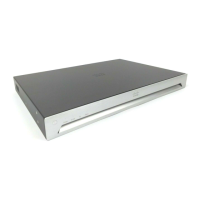
